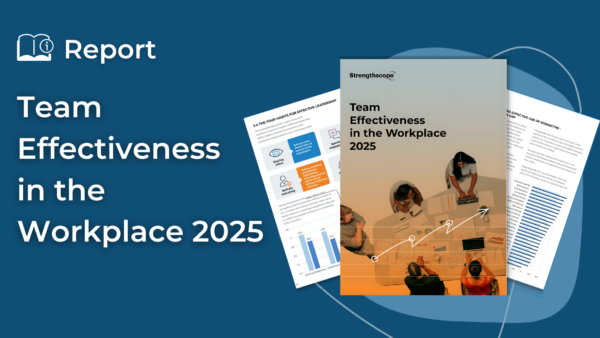The strengths approach to talent assessment and development has been around for almost two decades. Although many of the ideas behind the approach are decades old, the modern positive psychology and strengths movement sparked a different way of thinking – that a positive focus on strengths and solutions can be a more powerful way of accelerating learning and performance in organisations.
Despite a common myth that the strengths approach ignores weaker areas, it is one of the fastest growing trends in human resources today. This take-up is fuelled by a growing body of evidence showing strong links between strengths-based HR and talent management and critical HR outcomes such as engagement, teamwork, resilience, wellbeing and performance.
Organizations that use the approach effectively are often surprised to discover that it is also a far more powerful and empowering way to deal with weaker areas and other performance blockers as it tackles these in a more positive, creative and collaborative way.
So why should HR leaders champion this approach, ensuring it is embedded into their HR plans and cultural DNA to deal with the unprecedented levels of change we are facing?
Strengths optimisation fuels learning agility
Great learning in times of rapid change is all about positive stretch in areas of greatest strength. In other words, it involves doing things better and differently by leveraging your strengths and those of co-workers. It requires people to stretch outside their comfort zone to behave in new ways and test the limits of what’s possible. It is this stretch that helps people to learn about their true passions, values and work they find most meaningful. This is far from easy as we know from the perseverance and hours of practice by Olympic athletes and maestro musicians who hone their strengths for many years over different situations to achieve peak performance. We typically recommend a simple ‘80-20’ rule of thumb to clients, with 80% of the development focus for average to high performers being on optimising their strengths and how they can adapt and develop these to match the organisation’s new realities. The other 20% should be on reducing risks blocking peak performance including weaker areas and overdone strengths, or strengths used or used in the wrong way, at the wrong time or in the wrong combination resulting in poor performance. For example, people who are too confident may become arrogant and those that are too compassionate may find it difficult to avoid becoming over-involved in their co-workers’ personal problems.
Focusing on strengths fuels positive emotions
With so much disruptive and unpredictable change, it is easy to understand why many people are feeling gloomy.
As shown so brilliantly in the Pixar movie, Inside Out, every emotion – including sadness and anger – has a role to play in ensuring success, productive interpersonal relations and wellbeing of employees. However, too much negativity can undermine the morale and energy of employees, leaving them feeling disempowered, helpless and disconnected from the organisation’s customers, values and purpose.
The strengths approach doesn’t encourage people to suppress negative emotions, simply to be aware of them and the implications for their behaviour and outcomes. So, if someone is angry or sad, we encourage them to focus on strengths – theirs and those of others who can support them – to help deal with the situation more positively. This enables them to overcome their negative emotions more quickly and constructively. Research into strengths and neuroscience also shows that when people focus on strengths, solutions and possibilities more of the time, they feel more positive and energised. This positive mindset translates into improved morale, motivation and performance.
Strengths-building improves GRIT and resilience
When people have to deal with unpredictable and ever-changing situations, they need a high degree of perseverance and resilience.
When people discover and optimise their strengths, they develop higher levels of “Grit”, defined by Psychology Professor Angela Duckworth as the capacity to sustain both effort and interest in projects or tasks that take months or even longer to complete. Duckworth has found that people who are high in Grit don’t deviate from their goals, even in the absence of positive feedback and in the face of adversity. The Grit concept is essentially a combination of passion and perseverance. The implications are that businesses should be looking to hire and develop not only people who have the strengths, skills and motivation for the role, but also those who are willing to persevere and develop their psychological GRIT.
Resilience is essentially the capacity to bounce-back from setbacks and mistakes and become psychologically stronger as a result of the experience. Like everyone else, resilient people experience negative emotions as a result of negative events at work such a re-organisations and staff reductions. However, they are able to move on quicker and grow through these experiences. Research has shown that when teams and cultures are built around people’s strengths, they learn to be more collaborative and resilient, relying on their own strengths and those of their co-workers to deal with setbacks.
HR leaders shouldn’t assume people know their strengths and how to leverage them in times of change. Drucker observed “most people think they know what they are good at. They are usually wrong… And yet, a person can perform only from strength.” We agree with this assertion. Our work as global leaders in this field for more than a decade suggests that people don’t fully understand their strengths and take them for granted. Even if they do understand their strengths, they have mental blocks around talking about them, including fear of coming over as complacent or arrogant. By contrast, most people we meet are all too familiar with their weaknesses, often becoming ‘prisoner’ to these.
If we want to build positive cultures where people are more resilient, agile, confident, collaborative and solutions-focused, HR leaders need to put strengths discovery and optimisation at the heart of the HR and talent agenda, ensuring people reconnect with their work and can deal positively with the strengthening winds of change we are all facing.
Take a look at our world-leading, cloud-based strengths assessment and development system and solutions
James Brook










